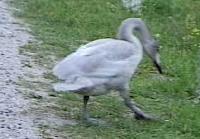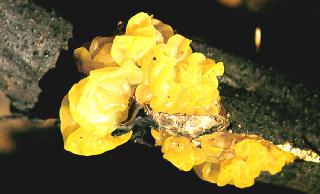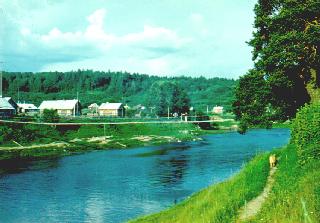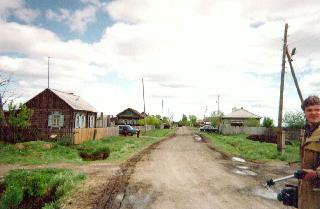Mäetagused vol. 4
Summary
Forty birds in folk belief III
Mall Hiiemäe
 The article acquaints folk beliefs about white wagtail (majority are connected with the growth of flax), swan (it has a single miracle feather under its wing, it is faithful to the partner. It has mislead the cranes. The person who gets swindled by swan does not have luck in travelling. In the runic verse the swan is the synonym for maiden), skylark (it has been cerated by god, it has white feathers in winter and it spends the winter under the drift, the person who hears its singing for the first time in the spring it foretells fortune and health, its swindling means the loss of singing voice), capercaille (the appearance of devil or elf), woodcock ( spends the winter under the sod, in springtime their back part is full of sweet milk), witch hawk ( a hawk sent from Lappland to impel birds to fly to Lappland to feed Lapps; a human bewitched into a bird; a witch; an artificial bloodless being), golden oriole ( the foreteller of rain and death, a bird connected with sowing of flax, the swindling causes lack of growth of flax), robin ( it has got its red breast form the blood of Jesus, when it tried to pull off his spikes), swallow (a maiden turns into a swallow because 1) a man marries a younger woman, 2) a man tries to kill a dumb woman and tears her skirt, 3) a witch turns a bride into a swallow and replaces her with her own daughter, 4) a stepmother kills an orphan and the orphan turns into a swallow, 5) she escapes with a bleeding throat and a torn skirt and turns into a bird, 6) a mother-in-law tears the skirt of her daughter-in-law, 8) an orphan girl, who has got too much work to do, 8) god, beggar or witch turns wedding guests into swallows. The nesting near the house is a sign of good fortune, but flying into the house means a fire in the house. They spend the winter in lakes. For the popularity it has been elected to be the national bird), corn crake (it is not able to fly, comes on foot from the south, gets across the water on board of the ships or drifting wood or on stork back. Swindled farts a lot).
The article acquaints folk beliefs about white wagtail (majority are connected with the growth of flax), swan (it has a single miracle feather under its wing, it is faithful to the partner. It has mislead the cranes. The person who gets swindled by swan does not have luck in travelling. In the runic verse the swan is the synonym for maiden), skylark (it has been cerated by god, it has white feathers in winter and it spends the winter under the drift, the person who hears its singing for the first time in the spring it foretells fortune and health, its swindling means the loss of singing voice), capercaille (the appearance of devil or elf), woodcock ( spends the winter under the sod, in springtime their back part is full of sweet milk), witch hawk ( a hawk sent from Lappland to impel birds to fly to Lappland to feed Lapps; a human bewitched into a bird; a witch; an artificial bloodless being), golden oriole ( the foreteller of rain and death, a bird connected with sowing of flax, the swindling causes lack of growth of flax), robin ( it has got its red breast form the blood of Jesus, when it tried to pull off his spikes), swallow (a maiden turns into a swallow because 1) a man marries a younger woman, 2) a man tries to kill a dumb woman and tears her skirt, 3) a witch turns a bride into a swallow and replaces her with her own daughter, 4) a stepmother kills an orphan and the orphan turns into a swallow, 5) she escapes with a bleeding throat and a torn skirt and turns into a bird, 6) a mother-in-law tears the skirt of her daughter-in-law, 8) an orphan girl, who has got too much work to do, 8) god, beggar or witch turns wedding guests into swallows. The nesting near the house is a sign of good fortune, but flying into the house means a fire in the house. They spend the winter in lakes. For the popularity it has been elected to be the national bird), corn crake (it is not able to fly, comes on foot from the south, gets across the water on board of the ships or drifting wood or on stork back. Swindled farts a lot).
The Ob Ugrians Mythology I
Aado Lintrop
The first part of the research on the folk belief of the Ob Ugrians.
Relative from across the River of Blood: the Lapp fairy tales about totem reindeer
Enn Ernits
 In the research there are treated the tales of totem reindeer Meandash with folk belief meaning. The myth of Peura was for the first time written down by Vassili Nemirovitsh-Dantshenko in 1873. If this story is connected to the totempeura Meandash it is not clear. The first certain story of the Meandash-cycle was collected by Arvid Genetz in 1876 and it was published in "Suomen kuvalehti" in 1879.
In the research there are treated the tales of totem reindeer Meandash with folk belief meaning. The myth of Peura was for the first time written down by Vassili Nemirovitsh-Dantshenko in 1873. If this story is connected to the totempeura Meandash it is not clear. The first certain story of the Meandash-cycle was collected by Arvid Genetz in 1876 and it was published in "Suomen kuvalehti" in 1879.
The greatest number stories of Meandesh were collected and published by a Russian geographer Vladimir, who took part of expeditions to Kola in 1927-1932 and in 1936-1938. He published the material in three books (Tsharnoluski 1962, 1965, 1972). Unfortunately V. Tsharnoluski has interpreted the material and perhaps even has mixed several variations. The fact remarkably diminishes the scientific value of his work.
The stories collected by V.Tsharnoluski have been the incitement for a Finnish scientist on rock paintings Eero Autio (1993). He was the first one to translate the stories of Meandash into Finnish and added valuable comments. He did deeper analysis of Lapp myths about the Sun Reindeer and the concepts concerned with totem and the reflections in North-Eurasian rock paintings. Meandash thematic has been concerning also for N.Gurina, H.Eelsalu.
The biography of Meandash can be divided into periods:
- Humanhood (4.1)
- boyhood (4.1.1)
- manhood (4.1.2)
- Cultural hero (4.2)
- Godhood (4.3)
- the victim of the god of thunder (4.3.1)
- the god of sun (4.3.2)
The chidhood of Meandesh is the subject only in 5 variations of 29 - too few to
draw reliable analytical conclusions. Every variant consists of 2-5 motifs, 3.4
in arithmetical mean. The most perfect are the variations from Kolta. The story
of the birth of Meandash was represented all over Kola, but unfortunately only
one variation has been written down in most cases.
Two variations have been recorded only form the Koltas. These two are similar in motifs.
The descent of the mother of Meandash is of different origin in different Lapp kin. If it has been originally different cannot be said for the lack of variations.
The motifs of helping his mother and looking for his roots is represented only at Kolts. And the mothers reaction (warning her son) has been taken from the story of Meandesh leaving home. The leaving of the son is represented in all 5 variations, but it has been borrowed twice from the second story of leaving just mentioned.
The shit of treasure bearer, the fallen down clouds and the heavenly mushrooms.
Aivar Jürgenson
 A remarkable place in Estonian folk belief has been occupied by slime fungi Fulgio septica. It has been thought to be connected with treasure collector or even with witch. This slime fungi is the biggest of the kind in the world: the receptacle can grow up to 30cm in diameter. In the folk tradition it is known as puugipask, puugisitt (the shit of treasure bearer) or nõiapask (shit of witch). Its most common color is yellow, but there are other tones as white, or it can be either gray or red. But there are not as many variations as pilvepala (the piece of a cloud). The puugipask is left were the treasure bearer has carried something away. To protect the household against the treasure bearer the mushroom has been burnt, or nailed to the wall or cut with a sharp thing or shot with a gun.
A remarkable place in Estonian folk belief has been occupied by slime fungi Fulgio septica. It has been thought to be connected with treasure collector or even with witch. This slime fungi is the biggest of the kind in the world: the receptacle can grow up to 30cm in diameter. In the folk tradition it is known as puugipask, puugisitt (the shit of treasure bearer) or nõiapask (shit of witch). Its most common color is yellow, but there are other tones as white, or it can be either gray or red. But there are not as many variations as pilvepala (the piece of a cloud). The puugipask is left were the treasure bearer has carried something away. To protect the household against the treasure bearer the mushroom has been burnt, or nailed to the wall or cut with a sharp thing or shot with a gun.
The pilvetükid or pilvepalad (the pieces of cloud) is an internationally spread concept known in Estonian, Latvian, Livonian, Votian, Finnish, Swedish and German folk belief. The pilvetükid (the pieces of cloud) is called mushrooms by M.J.Eisen: the mushrooms are almost invisible, but after rain become full of moisture and an appearance resembling jelly. The text leads to algae rather than mushrooms. In most occasions they are slime fungi - usually the specie is called Tremella nostoc, still the determination of the concrete specie is complicated because the pilvepala (the pieces of cloud) has characteristics of different biological species. The notations from Estonia say that the pilvetükid (the pieces of cloud) can be white (Räpina, Põlva), blue (Simuna, Järva-Madise), yellow (Simuna, Kolga-Jaani), gray or green (Võnnu). A single notation says that the the pilvetükid (the pieces of cloud) can be whitish blue, later when growing old it can turn into yellowish tones (Kolga-Jaani). It is obvious that different biological species are known as the pilvetükid (the pieces of cloud). The pilvetükid (the pieces of cloud) are described as follows: it is like jelly (Sangaste), sour milk (Helme), hardened bullion (Puhja), beef jelly (Varbla). The pilvetükid (the pieces of cloud) are considered to be sacred for the origin from the sky - they are taken in as a cure to recover from several diseases such as: malaria, stiching pain, typhoid fever, warts, eczema, constipation; eye diseases can be prevented by washing eyes; they are believed to make giving birth easier. According to the archive data the pilvetükid (the pieces of cloud) can also be good for quarking (Simuna), epilepsy (Simuna), swelling (Vändra), tooth ace (Kõpu).It is believed in Estonia that the pilvetükid (the pieces of cloud) cause rabies. In addition it is connected to the international motif of a patron who feeds wolves.
Charmed by Vepsic folklore
Kristi Salve
 The author introduces the Vepsian chants, fairy tales, proverbs, performing situation and the best performers, material about which was collected in the past few years.
The author introduces the Vepsian chants, fairy tales, proverbs, performing situation and the best performers, material about which was collected in the past few years.
Political anecdotes III
Kadi Sarv
The majority of material used in this article originates from the Estonian Folklore Archives. In the third part of the article series an overview is given of political anecdotes told in the period of soviet occupation. There is given a selection of anecdotes about Lenin, Stalin, Breznev, Hrushtshov. In the article there are given several audio examples and a self-composed song of Lenin.
New Song
Newer folk song "Ennu and Elsa" - the story of the two young unfortunate lovers performed by young folklorists.
 3.3 Mb .au Sound
Sample
3.3 Mb .au Sound
Sample
Vepsian fairy tale I
The longest Vepsian fairy tale recorded ever tells about the adventures of Ivan, son of the Tsar, who tries to marry crafty princess.
There in the Siberia across the Baikal
Ell Vahtramäe
 In 1995 Anu Korb, Indrek Kaimer and Ell Vahtramäe were on an expedition to collect folklore in the Estonian villages at the Omsk region. As we were hosted in the homes of local people, we had close contact with them. And therefore were especially close to their every day life. We had a good chance to take photos, make video and audio recordings. Even more we accumulated into our minds how did they differ from the Estonians in Estonia. This article is based on impressions of every walk of life.
In 1995 Anu Korb, Indrek Kaimer and Ell Vahtramäe were on an expedition to collect folklore in the Estonian villages at the Omsk region. As we were hosted in the homes of local people, we had close contact with them. And therefore were especially close to their every day life. We had a good chance to take photos, make video and audio recordings. Even more we accumulated into our minds how did they differ from the Estonians in Estonia. This article is based on impressions of every walk of life.
 The article acquaints folk beliefs about white wagtail (majority are connected with the growth of flax), swan (it has a single miracle feather under its wing, it is faithful to the partner. It has mislead the cranes. The person who gets swindled by swan does not have luck in travelling. In the runic verse the swan is the synonym for maiden), skylark (it has been cerated by god, it has white feathers in winter and it spends the winter under the drift, the person who hears its singing for the first time in the spring it foretells fortune and health, its swindling means the loss of singing voice), capercaille (the appearance of devil or elf), woodcock ( spends the winter under the sod, in springtime their back part is full of sweet milk), witch hawk ( a hawk sent from Lappland to impel birds to fly to Lappland to feed Lapps; a human bewitched into a bird; a witch; an artificial bloodless being), golden oriole ( the foreteller of rain and death, a bird connected with sowing of flax, the swindling causes lack of growth of flax), robin ( it has got its red breast form the blood of Jesus, when it tried to pull off his spikes), swallow (a maiden turns into a swallow because 1) a man marries a younger woman, 2) a man tries to kill a dumb woman and tears her skirt, 3) a witch turns a bride into a swallow and replaces her with her own daughter, 4) a stepmother kills an orphan and the orphan turns into a swallow, 5) she escapes with a bleeding throat and a torn skirt and turns into a bird, 6) a mother-in-law tears the skirt of her daughter-in-law, 8) an orphan girl, who has got too much work to do, 8) god, beggar or witch turns wedding guests into swallows. The nesting near the house is a sign of good fortune, but flying into the house means a fire in the house. They spend the winter in lakes. For the popularity it has been elected to be the national bird), corn crake (it is not able to fly, comes on foot from the south, gets across the water on board of the ships or drifting wood or on stork back. Swindled farts a lot).
The article acquaints folk beliefs about white wagtail (majority are connected with the growth of flax), swan (it has a single miracle feather under its wing, it is faithful to the partner. It has mislead the cranes. The person who gets swindled by swan does not have luck in travelling. In the runic verse the swan is the synonym for maiden), skylark (it has been cerated by god, it has white feathers in winter and it spends the winter under the drift, the person who hears its singing for the first time in the spring it foretells fortune and health, its swindling means the loss of singing voice), capercaille (the appearance of devil or elf), woodcock ( spends the winter under the sod, in springtime their back part is full of sweet milk), witch hawk ( a hawk sent from Lappland to impel birds to fly to Lappland to feed Lapps; a human bewitched into a bird; a witch; an artificial bloodless being), golden oriole ( the foreteller of rain and death, a bird connected with sowing of flax, the swindling causes lack of growth of flax), robin ( it has got its red breast form the blood of Jesus, when it tried to pull off his spikes), swallow (a maiden turns into a swallow because 1) a man marries a younger woman, 2) a man tries to kill a dumb woman and tears her skirt, 3) a witch turns a bride into a swallow and replaces her with her own daughter, 4) a stepmother kills an orphan and the orphan turns into a swallow, 5) she escapes with a bleeding throat and a torn skirt and turns into a bird, 6) a mother-in-law tears the skirt of her daughter-in-law, 8) an orphan girl, who has got too much work to do, 8) god, beggar or witch turns wedding guests into swallows. The nesting near the house is a sign of good fortune, but flying into the house means a fire in the house. They spend the winter in lakes. For the popularity it has been elected to be the national bird), corn crake (it is not able to fly, comes on foot from the south, gets across the water on board of the ships or drifting wood or on stork back. Swindled farts a lot). In the research there are treated the tales of totem reindeer Meandash with folk belief meaning. The myth of Peura was for the first time written down by Vassili Nemirovitsh-Dantshenko in 1873. If this story is connected to the totempeura Meandash it is not clear. The first certain story of the Meandash-cycle was collected by Arvid Genetz in 1876 and it was published in "Suomen kuvalehti" in 1879.
In the research there are treated the tales of totem reindeer Meandash with folk belief meaning. The myth of Peura was for the first time written down by Vassili Nemirovitsh-Dantshenko in 1873. If this story is connected to the totempeura Meandash it is not clear. The first certain story of the Meandash-cycle was collected by Arvid Genetz in 1876 and it was published in "Suomen kuvalehti" in 1879. A remarkable place in Estonian folk belief has been occupied by slime fungi Fulgio septica. It has been thought to be connected with treasure collector or even with witch. This slime fungi is the biggest of the kind in the world: the receptacle can grow up to 30cm in diameter. In the folk tradition it is known as puugipask, puugisitt (the shit of treasure bearer) or nõiapask (shit of witch). Its most common color is yellow, but there are other tones as white, or it can be either gray or red. But there are not as many variations as pilvepala (the piece of a cloud). The puugipask is left were the treasure bearer has carried something away. To protect the household against the treasure bearer the mushroom has been burnt, or nailed to the wall or cut with a sharp thing or shot with a gun.
A remarkable place in Estonian folk belief has been occupied by slime fungi Fulgio septica. It has been thought to be connected with treasure collector or even with witch. This slime fungi is the biggest of the kind in the world: the receptacle can grow up to 30cm in diameter. In the folk tradition it is known as puugipask, puugisitt (the shit of treasure bearer) or nõiapask (shit of witch). Its most common color is yellow, but there are other tones as white, or it can be either gray or red. But there are not as many variations as pilvepala (the piece of a cloud). The puugipask is left were the treasure bearer has carried something away. To protect the household against the treasure bearer the mushroom has been burnt, or nailed to the wall or cut with a sharp thing or shot with a gun. The author introduces the Vepsian chants, fairy tales, proverbs, performing situation and the best performers, material about which was collected in the past few years.
The author introduces the Vepsian chants, fairy tales, proverbs, performing situation and the best performers, material about which was collected in the past few years. In 1995 Anu Korb, Indrek Kaimer and Ell Vahtramäe were on an expedition to collect folklore in the Estonian villages at the Omsk region. As we were hosted in the homes of local people, we had close contact with them. And therefore were especially close to their every day life. We had a good chance to take photos, make video and audio recordings. Even more we accumulated into our minds how did they differ from the Estonians in Estonia. This article is based on impressions of every walk of life.
In 1995 Anu Korb, Indrek Kaimer and Ell Vahtramäe were on an expedition to collect folklore in the Estonian villages at the Omsk region. As we were hosted in the homes of local people, we had close contact with them. And therefore were especially close to their every day life. We had a good chance to take photos, make video and audio recordings. Even more we accumulated into our minds how did they differ from the Estonians in Estonia. This article is based on impressions of every walk of life.